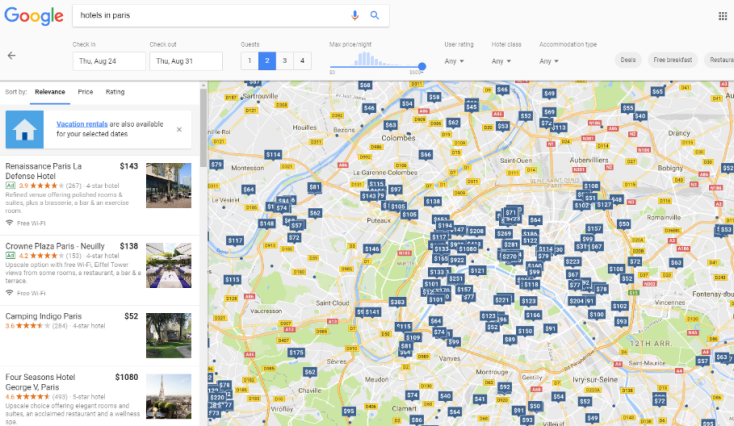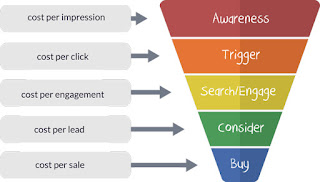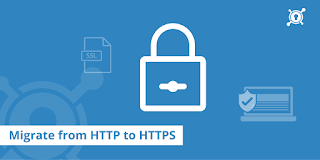This month we’re looking at a Google Search Console update, Google
adding a ‘news feed’, AMP content, a new version of AdWords Editor, new
call bid adjustments and Google adding ‘holiday rentals’ to its Hotel
Search.
Google Search Console (GSC) update
In last month’s round-up we looked at how long it takes for a website to rank. Avid users of Google Search Console may have noticed a note placed on 13 July 2017 within the search analytics screen that looked like this:
 What does this mean for marketers?
What does this mean for marketers?
MORE DATA! You may take this as a positive or negative. The changes
sure do throw off any impression or average position graphs you’ve been
tracking and storing over the past x number of years.
The positives of these changes mean we’re no longer playing guessing
games for lower ranking queries. We’ll be able to see beyond the average
position 100. This offers further opportunities for queries we may not
have even thought about targeting.
Our
SEO experts would suggest starting small, just like you would with a
new GSC account. Don’t try to analyze every query with average position
100+ or you’ll face a mountainous task. Start with a set of queries
you’re familiar with and try looking for new opportunities and keyword
variations.
Google to add ‘news feed’ to website and app
Google is currently rolling out a Facebook-style news feed to its homepage, which will be shown on both desktop and mobile devices. The purpose is to show users content they may be interested in before they perform a search.
Users will be able to click a ‘follow’ button on search results to
add topics of interest to their feed. You can read more about this on
the BBC website or check out this video:
What this means for marketers
This could present some new opportunities. You will be able to follow topics closely related to your business and discover relevant content. It also presents opportunities for content marketing, with more opportunities to get pieces in front of relevant audiences.
Survey shows AMP content is preferred over regular content
A recent survey has suggested that users prefer Accelerated Mobile Pages (AMP) over regular content.
Out of 1,500+ respondents, just over 50% said, “Yes, I prefer the
stripped down version of a website when reading something.” That being
said, within the survey 24% of participants answered, “No, if I want to
read something, I will open the link whether it’s AMP or not.”
What is AMP?
AMP pages are essentially a stripped-down form of HTML. They are designed to be super-lightweight so they load faster on mobile devices.
What this means for marketers
When thinking about UX, website load speed has become one of the most important elements for mobile devices, especially now that mobile users make more than 50% of search. AMP pages have established themselves well in the past 18 months. If you are anything like me, you too will get frustrated when a page doesn’t open within two seconds.
As many of us have now adopted HTTPs, we should also be looking at
adopting AMP to increase the usability of websites and ensure easy
access to resources, or face the user switching to a competitor.
Google launches a new version of AdWords Editor
AdWords has a fresh new look, which has been designed for easier overall navigation. Also, there is a host of new features added, such as “Maximize Conversion Bidding”, which was released on the web version of AdWords last month. There are also new editable fields for responsive ads such as logos, promotion text, and call to action text.
This new version of AdWords Editor will allow marketers to use the
software much like the web version, which has always been an issue in
the past. Although not a perfect solution, it is a welcome next step.
Google adds holiday rentals to Hotel Search
Google is adding a new feature into its hotel search interface – now it will ask if you would rather search for vacation rentals instead of hotels.

This will have a huge impact on the vacation rental market as now,
users can use Google Hotel Search instead of sites such as VRBO or
Flipkey. Marketers now have to rethink how they create vacation rental
ads that adhere to Google’s rules, as well as splitting budget between
multiple sites.
New call bid adjustments in AdWords
You can now adjust bids related to call extensions in AdWords, which will allow you to show these extensions more or less often on mobile search ads.
From the announcement:
“If you’re a travel advertiser, you may see higher order values from
calls because it can be easier to cross-sell rental cars, group tours
and other vacation add-ons during a live conversation. Raise your call
bid adjustments to show call extensions more frequently and drive more
of these high-value call conversions.”




